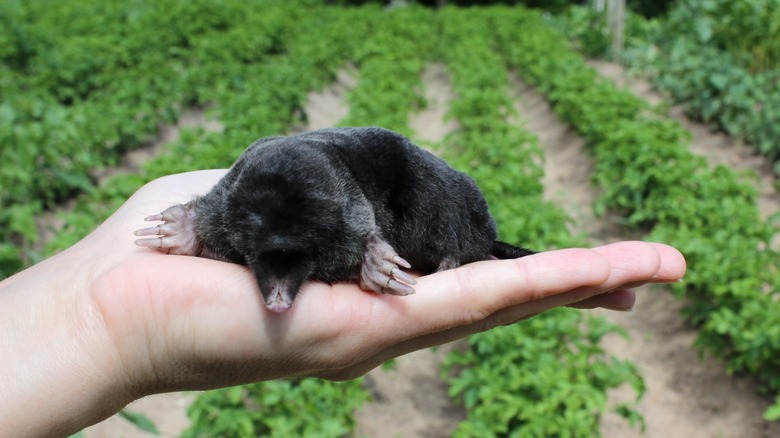When Is It Time To Bring Out A Trap To Control Pests In The Garden?
From natural remedies and chemical products to DIY repellents, there are endless ways to deter pests from feeding on the luscious greens and bountiful fruits of your home garden. Whether they are mammals, like groundhogs and gophers, or clusters of tiny insects, the results of each method can vary. And, if you are dealing with larger pests, you've likely learned that they are extremely stubborn and tough to keep away.
If you have expended all of the repellents in your wheelhouse and haven't found success, it is time to start considering live traps. While humane compared to lethal traps, relocating animals to an unfamiliar environment often causes them trauma. That being said, it may be the only way to save your plants. If done correctly and when completely necessary, you can give relocated animals their best chance at success while simultaneously allowing your garden to blossom into its greatest potential.
Exhaust your options
Along with having a negative impact on the animal involved, trapping and relocating wildlife is also a lot on the gardener. While live traps are widely accessible both online and in many popular hardware stores, they are relatively pricey compared to other store-bought and do-it-yourself deterrents. These traps also put the gardener face-to-face with a wild animal, which could be carrying dangerous diseases, like rabies. With all of this in mind, live traps are a last resort and should be used once you exhaust all of the other options at your disposal.
DIY deterrents are typically the cheapest and most easily accessible options and often take advantage of wild animals' keen sense of smell. While they may love the taste of fresh fruits and vegetables, this desire typically isn't tested if they smell a potential threat. Because of this, many gardeners find success in adding the fur and urine of their pest's predators (via HGTV). Other natural scent deterrents are garlic and onions for rabbits, and cayenne pepper for groundhogs, all of which can be grown in your garden.
Trapping and releasing properly
As mentioned earlier, trapping and releasing wildlife is potentially dangerous, and should be done carefully to avoid injury both to oneself and the animal being relocated. To do this, start by purchasing a live trap that is suitable for the animal you are trying to capture. Put the animal's favorite food (try using the same fruits or vegetables that they typically munch on in your garden) in the trap as bait and set it near your garden.
It is important to check the trap every few hours because, once the animal is caught, it should not be kept in the trap for a long period of time. This will inflict unnecessary stress. Contact animal control to find out where the animal should be released, as each area has its own regulations, and each animal thrives in a specific environment. Note that you may have to release the animal many miles from your garden to prevent it from returning.
Wear gloves and long sleeves when handling the trap, place a towel over it, and hold it away from your body when transporting it to the new location. Once you have arrived, slowly remove the towel and open the cage door to let the animal exit on its own.


